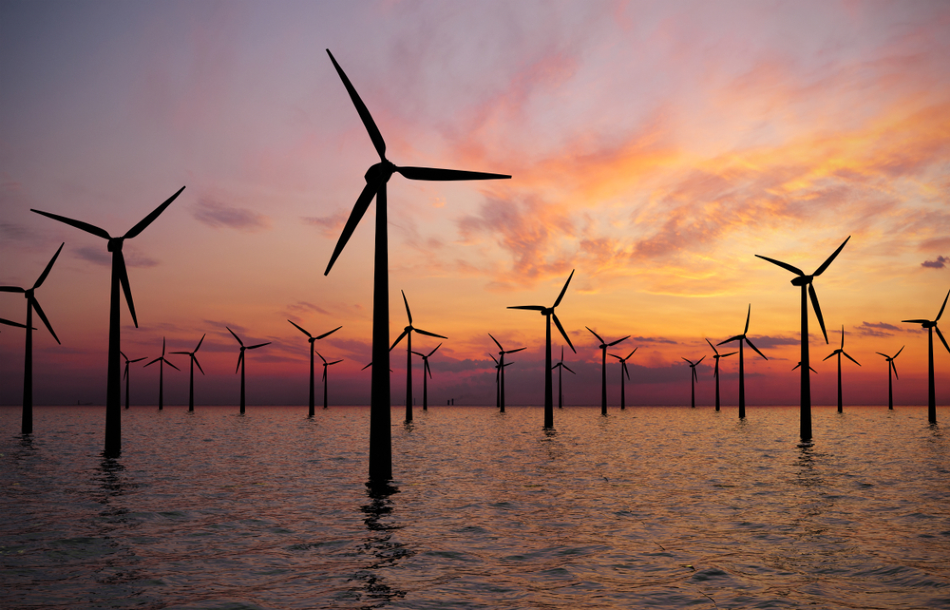Jun 10 2014

Image Credit: TebNad/Shutterstock.com
Article updated on 18/02/20 by Ben Pilkington
Ocean/offshore wind farms refer to the construction of wind turbines in bodies of water that generate electricity from wind. Greater wind speeds are available offshore when compared to onshore, and hence offshore wind turbines can supply more electricity than onshore ones.
Offshore wind turbine technology has developed at a fast pace over the last few years with some of the world’s largest companies involved in several offshore wind energy projects.
Construction of Ocean Wind Farms
A typical ocean wind farm consists of many wind turbines located in seawater, linked together by a series of cables to an offshore transformer station. The station is in turn connected by an underwater cable to an onshore transformer station linked to a power grid. The wind turbines are usually laterally spaced at a distance that is several times their rotor diameter, and they are staggered to reduce wake effects. Installing turbines closer to each other increases turbulence and wake effects thereby minimizing power generation.
Each wind turbine system in ocean wind farms will include a foundation, support structure, transition piece, tower, rotor blades,and nacelle. To date, numerous foundation structures exist, which include a monopole base, gravity base structures, tripod piled structures, conventional steel jacket structures, and floating bases. Support structures are used to connect the transition piece or tower to the foundation. In certain cases, foundations act as support structures as well. The nacelles include the electro-mechanical components of wind turbines such as generators and gearboxes. The power cable for each turbine is placed within a plastic tube, and it runs to the cable trench located in the seabed.
Construction Considerations
A few considerations to be taken care of while constructing offshore wind farms include:
- Transportation – foundations such as suction caissons, braced frames, tripods and monopiles need to be transported to the sites using barges. In some cases, like monopiles with a large diameter, the ends are capped, sealed and floated to the site. The turbine is generally transported as one piece.
- Erection – a jack-up rig acts as a stable platform for carrying out operation, including installing the rotors, nacelle, tower, and piles. However, it lacks maneuverability during the installation of the tower. Hence, ship-shaped vessels having rotating cranes are usually preferred in carrying out the construction work.
- Offshore electric cabling - undersea power transmission cables are employed through a hydro-plowing process in which cables are buried a few meters below the seabed.
Other considerations include collisions with ships, marine growth, and corrosion protection. Significant cost and schedule savings can be achieved by performing each step of the construction process in an efficient manner. Since the sea conditions are irregular and extreme, the maintenance of offshore wind farms is much more challenging than onshore operations. Ocean wind farms require a strict maintenance schedule at intervals of four to six months.
Conclusion
Offshore wind energy has great potential to help nations achieve a clean, independent energy source for the future. The impact of noise generated during wind farm construction on marine populations is currently one of the major concerns of offshore wind turbines. Several studies conducted on evaluating the noise impacts suggest that the regulators must make efforts to meet both climate change targets and existing environmental policies on conserving marine species.
Offshore foundations are subjected to additional load impacts such as ice loads, ocean currents, potential ship impact and storm wave loading. Another significant barrier is the high cost of construction and maintenance of offshore wind turbines. Despite all these significant challenges, increasing installations of offshore wind turbines across the world emphasize the need for significant improvements in offshore wind farm construction processes to achieve more innovative and cost-effective foundations in the future.
References and Further Reading